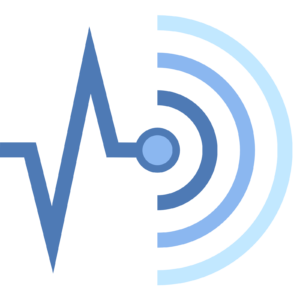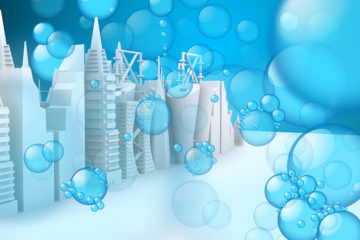Introduction
Smart and advanced biosensors are defining the successful commercialization of life-changing medical devices and have provided a continual stream of ground-breaking tools to improve patient care.
Biosensors are value-add components for integrated use within patient-centered Smart Healthcare frameworks, for use inside healthcare, clinic facilities, and home settings.
Healthcare Point-of-Care (POC) biosensor-based solutions are examples of how technology can significantly improve patient care with integrated use of functionally-rich sensors and real-time and remote health monitoring systems.

Point-of-Care testing, or bedside testing, is defined as medical diagnostic testing at or near the point of patient care. This differs with the traditional pattern in which testing confined to the medical facilities, entailed sending specimens from the point of care and waiting excessive hours or days to receive the results, during which time patient care must continue without the required information. More than two-third of Americans have smartphones, and thus, there is real potential for future use of mobile apps and wearable sensors supporting people seeking to participating in monitoring their medical or wellness conditions.
Biosensor solutions typically comprise an array of biosensor devices, including wearable and implantable with the capability to accurately discover, monitor, measure, and quickly report physiological parameters such as heart rate, oxygen saturation, changes in plasma protein profile, muscle activity, body movements, and patterns of multiple biomarkers and their concentration.
Sensor data communicate with a mobile or other digital device, via Bluetooth, which in turn transmits the sensed signals to a cloud-based patient management application. Such data can trigger patient alerts that enable physicians and clinicians to diagnose and warn of health exposure quickly, prescribe personalized treatment regimens, or help individuals improve the monitoring and management of existing healthcare and wellness condition. These insights could also reduce the frequency of physician visits and lab tests.
Biosensor solutions, have been successfully integrated and deployed by best-in-class healthcare providers, within the Internet of Things (IoT) technical approach and seamless integration of Mobile and Edge Computing technologies, and AI – Machine Learning tools.
Biosensors have successfully evolved in capabilities, in recent years, and continually demonstrate substantial improvements in body component detection and response time. An essential function of biosensor solutions is the ability to continuously learn and understand patient conditions with the use of AI – machine learning technology, that is used to generate more accurate patient health baselines and identify problems autonomously by detecting preset medical trends using personalized algorithms.
“Treatment without prevention is simply unsustainable.”
Bill Gates
Smart Healthcare Characteristics
In the current environment, the characteristics of Smart Healthcare, as demonstrated by healthcare organizations, at all levels, include:
- Accurate patient diagnosing and treating illness conditions and wellness services with point-of-care and other technology solution support.
- Appropriate treatments and services delivered to patients at the prescribed time, agreed on a location, with suitable technology devices and medicines.
- Assignment of credentialed clinicians.
- Cost-effective delivery patient models (bringing healthcare services to remote and unserved geographies).
- High productive clinicians with an ensuing increase in patient face time.
- Proactive patient involvement.
- Secure, central and easily accessible patient records.
- Streamline patient care models.
- A collaboration of patients and healthcare care clinicians/healthcare professionals, effectively and efficiently sharing, updating, and using correct and up-to-date patient information.
Biosensor: Definition
A biosensor is a biological detection solution consisting of a natural component and transducer and reused to detect and quantify organic material associated with a disease state or health condition (biomarkers). Biosensors include the integrated use of natural and physio-chemical components.
Natural
Natural components include macromolecules such as antibodies, enzymes, tissue slices used to recognize and interact with a specific analyte.
Physiochemical
Physiochemical components include transducers that convert the interactions into signals and later amplified concerning its concentration of the analyte.
Biosensors: Types
There are different types of biosensors based on the sensor devices and the biological materials as outlined below:
- Image Sensors
- Inertial Sensors
- Medical Based Sensors
- Motion Sensors
- Position Sensors
- Pressure Sensors
- Temperature Sensors
- Others
“We are all now connected by the Internet, like neurons in a giant brain.”
Stephen Hawking
Biosensors: Healthcare Applications
Healthcare Biosensors groups include:
- Diagnostics
- Imaging
- Medical Therapeutics
- Monitoring
- Wellness and Fitness
Biosensors: Development Generations
Since the development of the first oxygen biosensor by Led and Clark in 1962, biosensors have gained significant attention in recent years in medicine and nanotechnology. Biosensor solutions have shown immense potential for applications in medical diagnostics and numerous industries like pharmaceutical, food, beverages, environmental, agricultural, and many other biotechnological industries
There are three widely-recognized generations of biosensors encompassing:
First Generation Biosensors
This generation focused on where the natural product of the reaction diffuses to the transducer and causes the electrical response.
Second Generation Biosensors
This generation focused on where specific mediators between the reaction and the transducer to generate an improved response.
Third Generation Biosensors
This generation focused on where the reaction itself causes the response, and no product or mediator diffusion is directly involved.
“Without data, you’re just another person with an opinion.”
W. Edwards Deming
Biosensors: Healthcare Focus
Healthcare is the dominant segment in the global biosensors industry. Biosensors have an array of vital uses in medical science such as blood glucose monitoring, drug discovery, drug analysis, and whole blood analyzers. Healthcare biosensors are used in hospitals to support real-time point-of-care testing and blood gas monitoring. As the awareness regarding health and wellness is increasing, the use of biosensors in diagnostics is concurrently growing.
The National Center for Biotechnology Information, U.S. National Library of Medicine reports:
- The tremendous potentiality of biosensors in medical diagnostics has driven scientists in the evolution of biosensor technologies and innovating newer tools in time. The cornerstone of the popularity of biosensors in sensing a wide range of biomolecules in medical diagnostics is due to their simplicity in operation, higher sensitivity, ability to perform multiplex analysis, and capability to be integrated with different function by the same chip.
- There remains a considerable challenge to meet the demands of performance and yield to its simplicity and affordability. The ultimate goal stands for providing the point-of-care testing facility to the remote areas worldwide, particularly the developing countries. It entails continuous development in technology towards multiplexing ability, fabrication, and miniaturization of biosensor devices so that they can provide lab-on-chip-analysis systems to the community.
“What gets measured gets improved.”
Peter Drucker
Medical Sensors Patches
Medical sensor patches are digital solutions placed on the body that enable constant and semi-continuous monitoring of physiological and cognitive parameters, including skin temperature measurement to more sophisticated electrocardiogram measurements without tethering the patients to a wired computer system hub.
The sensor patch is introducing improved methods to deliver healthcare services in clinical and remote settings enabling total patient safety and comfort. This sensor technology is also used to uncover biological and physiological changes related to an individual’s state of mind — the modulation of the physiological state recognized by the sympathetic and parasympathetic subdivisions of the autonomic nervous system. Multiplied sympathetic human nerve system activity leads to amplified heart rate, blood pressure, and sweating, leading to changes in skin conductivity.
Medical Sensor Research
A team of researchers from Brigham and Women’s Hospital (BWH), MIT, and Harvard Medical School has developed a wireless sensor system capable of powering and communicating with devices implanted within the human body.
The team’s sensor solution, In-Vivo Networking (IVN), relies on a variety of antennas that emit radio waves of different frequencies. The devices are the size of a grain of rice and powered by radio frequency waves, versus electricity. The tool uses slightly different rates when the high points of the waves overlap; they combine to create energy.
Currently, implantable medical devices, such as pacemakers, typically rely on batteries with a limited lifespan and take up most of the space on the device.
“Having the capacity to communicate with these systems without the need for a battery would be a significant advance. These devices could be compatible with sensing conditions as well as aiding in the delivery of a drug,” says Giovanni Traverso, assistant professor at Brigham and Women’s Hospital (BWH), Harvard Medical School, a research affiliate at MIT’s Koch Institute for Integrative Cancer Research.
Biosensors: 2018 Trends
The significant biosensor trends recognized for 2018 include:
Business Wire (Berkshire Hathaway Company) reports:
- Globally disposable medical sensors market witnesses a lucrative growth with a CAGR of 6.18% for the forecast period from 2018 to 2026.
- Cost-effectiveness and reduction in hygiene risks drive the rising adoption of the disposable medical sensors market.
- Among all sensor types, biosensors expected to attain the largest market share during the period from 2016 to 2026.
- The introduction of smart connectivity options enables remote monitoring of patients, thus catalyzing the growth of patient monitoring devices.
Report Buyer reports:
- The high prevalence of chronic diseases has resulted in the massive economic burden of healthcare spending. The technological advancements in the field of point of care testing based on biosensing technologies are anticipated to address the problem of enormous healthcare burden and aid in combating several prime concerns to global health.
- The growing geriatric population and high prevalence of chronic diseases have significantly elevated the demand for clinical diagnostic services. By 2030, the global economic impact of five leading chronic diseases: cancer, diabetes, mental illness, heart disease, and respiratory disease, is anticipated to reach $47 trillion.
- Different types of biosensing technologies currently in use are electrochemical, optical, piezoelectric, and thermal. In less turnaround time, biosensors have become an essential tool for the healthcare companies and laboratories that are facing increasing levels of demand for the point of care testing devices and home diagnostics.
- The invasive nature of traditional laboratory procedures causes considerable pressure on the patient due to the various physical trauma, which made continuous monitoring of the disease practically impossible. Moreover, the growing burden of the geriatric population has elevated the requirement of devices enabling constant monitoring of condition with short turnaround times.
“Genius is one percent inspiration and ninety-nine percent perspiration.”
Thomas A. Edison


